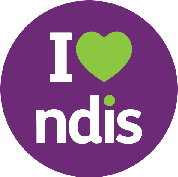Artificial Intelligence (AI) is changing the way people with disabilities live (AI for disability), learn, and connect with their communities. From smart home devices and adaptive learning tools to voice-controlled wheelchairs, AI is reshaping accessibility and independence in remarkable ways.
At Centre of Hope, we work closely with NDIS participants to explore new supports, including assistive technologies, that make everyday life more inclusive and empowering.
AI Empowers Independence and Communication
AI technology has quickly become part of daily life, offering exciting new possibilities for people with disabilities. Here are some of the most impactful examples:
🗣️ Voice Assistants & Smart Homes
Devices like Amazon Alexa and Google Home respond to voice commands, perfect for people with limited mobility or vision. They can turn on lights, make calls, and even control temperature. AI-powered smart homes give users more control and reduce reliance on others, boosting confidence and independence.
➡️ Learn more about building confidence and community through support coordination on our Services page.
💬 Communication Support
For individuals with speech or language challenges, including those with Down syndrome or autism, AI-powered apps can be life-changing. Text-to-speech programs, predictive typing tools, and communication boards powered by AI help users express themselves more clearly.
Recent studies show that over 90% of neurodiverse users (including people with ADHD or dyslexia) found AI writing assistants helpful for communication and planning tasks.
🦾 Mobility & Prosthetics
AI-enhanced smart wheelchairs and prosthetic limbs can learn from user movements, predicting intent and adjusting automatically. This technology supports people with physical disabilities or spinal injuries, allowing smoother and more natural motion.
🧠 Learning & Organisation Tools
AI apps help people with ADHD or cognitive challenges stay organised by setting reminders, breaking down tasks, and even suggesting rest periods. Adaptive learning tools also help individuals with intellectual disabilities learn at their own pace, a big step toward inclusive education.
If you want to see how our psychosocial recovery coaches can help you build daily living skills and confidence, explore:
👉 Psychosocial Recovery Coaching – 7 Key Benefits.
🦻 Accessibility for All
AI improves content accessibility, too. Automatic captions on videos help people who are deaf or hard of hearing, while apps like Be My Eyes describe the visual world for those with low vision. AI even reads text aloud or converts printed material into audio.
Together, these technologies make it easier for everyone to participate fully in work, study, and community life.
Potential Drawbacks and Cautions
While AI is incredibly promising, it’s important to approach it with awareness and balance.
⚠️ Bias and Representation
AI systems learn from data, but not all data includes people with disabilities. If not trained inclusively, AI can misunderstand or exclude users. For example, facial recognition may not accurately detect people with physical differences or mobility devices.
❌ Over-Reliance and Misinformation
AI tools like ChatGPT can sometimes provide inaccurate answers or oversimplify complex issues. It’s best to use AI as a support tool, not a replacement for professional or human advice.
💰 Cost and Accessibility
Many advanced AI tools and devices are expensive and may not yet be fully funded by NDIS. Some are considered “mainstream” technology rather than assistive devices, meaning they can be hard to claim.
This is where a Support Coordinator can help. Our team at Centre of Hope assists participants in understanding which AI-based supports are reasonable and necessary under the NDIS.
👉 Read more: NDIS Support Coordination Levels Explained.
🔒 Privacy Concerns
AI tools often use sensitive data such as voice recordings or health information. Always check privacy policies and ensure you’re comfortable with how your data is stored and shared.
How NDIS Supports AI and Assistive Technology
The NDIS recognises assistive technology (AT) as an essential tool for independence. According to the NDIS guidelines, eligible participants can access funding for communication devices, mobility aids, and smart technology that meet their individual goals.
AI-based tools may fall under the same category if they:
- Support independence and community participation
- Improve communication or mobility
- Are safe, reliable, and cost-effective
At Centre of Hope, we help you navigate these funding options. As an NDIS registered provider (Reg. ID: 4050161679), we offer personalised Support Coordination and Psychosocial Recovery Coaching services to help participants use new technologies confidently.
You can learn more about the funding process here:
👉 NDIS Funding in Australia: What the NDIS Covers and What It Doesn’t.
Real-Life Impact of AI
AI isn’t just about gadgets, it’s about empowerment.
- A participant with quadriplegia uses voice-controlled systems to live independently at home.
- A young adult with ADHD relies on an AI planner to manage work and therapy schedules.
- A student with Down syndrome learns new words using AI-powered reading apps tailored to her learning pace.
These examples show how AI, when paired with human understanding and NDIS support, can open doors to new levels of independence.
A Balanced Outlook
AI is neither a cure-all nor a threat; it’s a tool for empowerment when used wisely. It allows people with disabilities to live more freely, communicate more effectively, and pursue their goals.
However, ethical design, affordability, and education remain crucial. The future of accessibility depends on collaboration between participants, families, NDIS providers, and developers.
At Centre of Hope, we believe that technology should serve humanity. Our mission is to ensure every participant benefits from innovation without losing personal connection or care.








